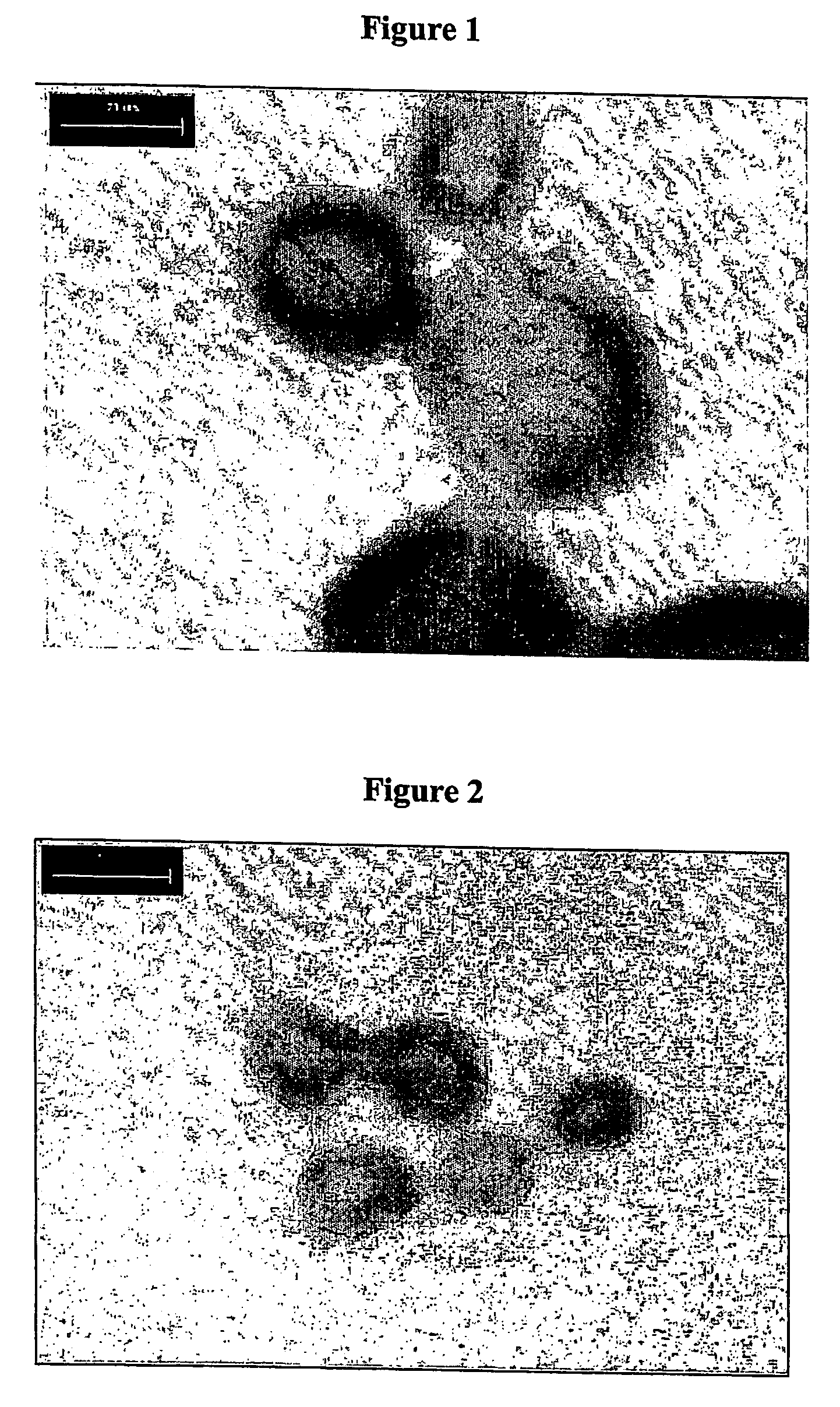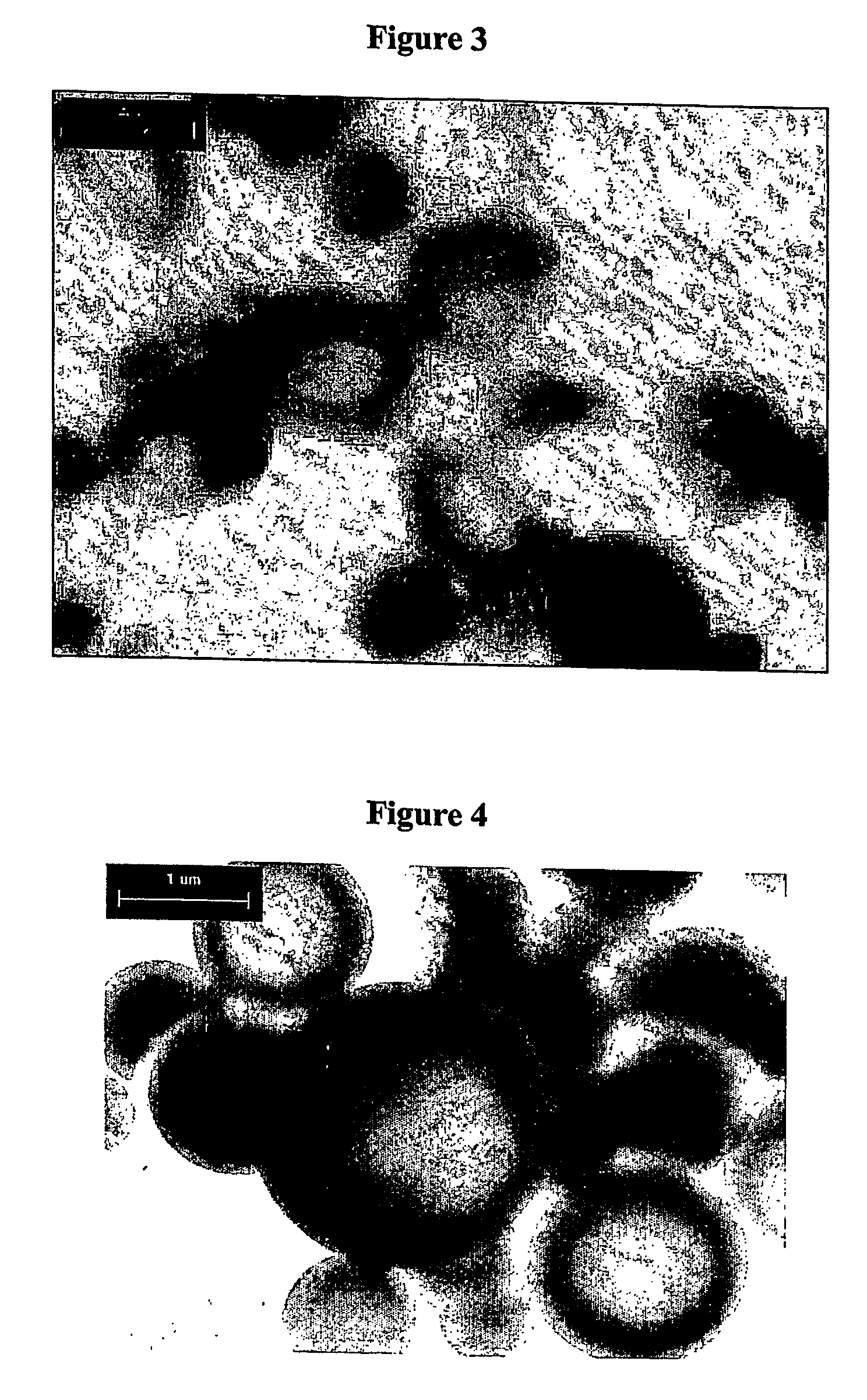Method for preparing microcapsule by miniemulsion polymerization
a microemulsion and polymerization technology, applied in the field of preparing microcapsules by miniemulsion polymerization, can solve the problems of inability to encapsulate a low-temperature volatile material with a low molecular weight of 500 daltons or less, and limit the types of organic materials
- Summary
- Abstract
- Description
- Claims
- Application Information
AI Technical Summary
Benefits of technology
Problems solved by technology
Method used
Image
Examples
examples 1 through 3
[0085] All components were mixed according to composition ratios presented in Table 1 below and added to a Microfluidizer which is a homogenizer to obtain miniemulsion particles. The miniemulsion particles thus obtained were heated in a polymerization reactor at 65° C. under a nitrogen atmosphere for 5 hours in a batch process to give latexes. Properties of the latexes thus obtained were analyzed and the analysis results are presented in Table 1 below.
examples 4 through 9
[0088] All components except a crosslinking agent were mixed according to composition ratios presented in Table 2 below and added to a Microfluidizer which is a homogenizer to obtain miniemulsion particles. The miniemulsion particles thus obtained were heated in a polymerization reactor at 90° C. under a nitrogen atmosphere in a batch process. At this time, the crosslinking agent was added and the resultant solution was incubated for 10 hours to give latexes. Properties of the latexes thus obtained were analyzed and the analysis results are presented in Table 2 below.
TABLE 2Latex compositions and propertiesExam.Exam.Exam.Exam.Exam.Exam.Section456789ComponentMonomerStyrene100100100100100100(pbw)HydrophilicAcrylic acid——3333comonomerCrosslinkingButanediol333333agentdimethacrylateUltrahydrophobeHexadecane3.63.63.63.63.63.6HydrophobicIsooctane505050505050materialInitiatorBenzoylperoxide0.50.50.50.50.50.5EmulsifierAerosol OT0.30.050.050.050.050.05Deionized water200200200200200200Additi...
examples 10 through 12
[0090] All components were mixed according to composition ratios presented in Table 3 below and added to a homogenizer to obtain a miniemulsion. The miniemulsion thus obtained were heated in a polymerization reactor at 90° C. under a nitrogen atmosphere for 10 hours in a batch process to give latexes. Properties of the latexes thus obtained were analyzed and the analysis results are presented in Table 3 below.
PUM
| Property | Measurement | Unit |
|---|---|---|
| temperature | aaaaa | aaaaa |
| particle size | aaaaa | aaaaa |
| molecular weight | aaaaa | aaaaa |
Abstract
Description
Claims
Application Information
 Login to View More
Login to View More - R&D
- Intellectual Property
- Life Sciences
- Materials
- Tech Scout
- Unparalleled Data Quality
- Higher Quality Content
- 60% Fewer Hallucinations
Browse by: Latest US Patents, China's latest patents, Technical Efficacy Thesaurus, Application Domain, Technology Topic, Popular Technical Reports.
© 2025 PatSnap. All rights reserved.Legal|Privacy policy|Modern Slavery Act Transparency Statement|Sitemap|About US| Contact US: help@patsnap.com



